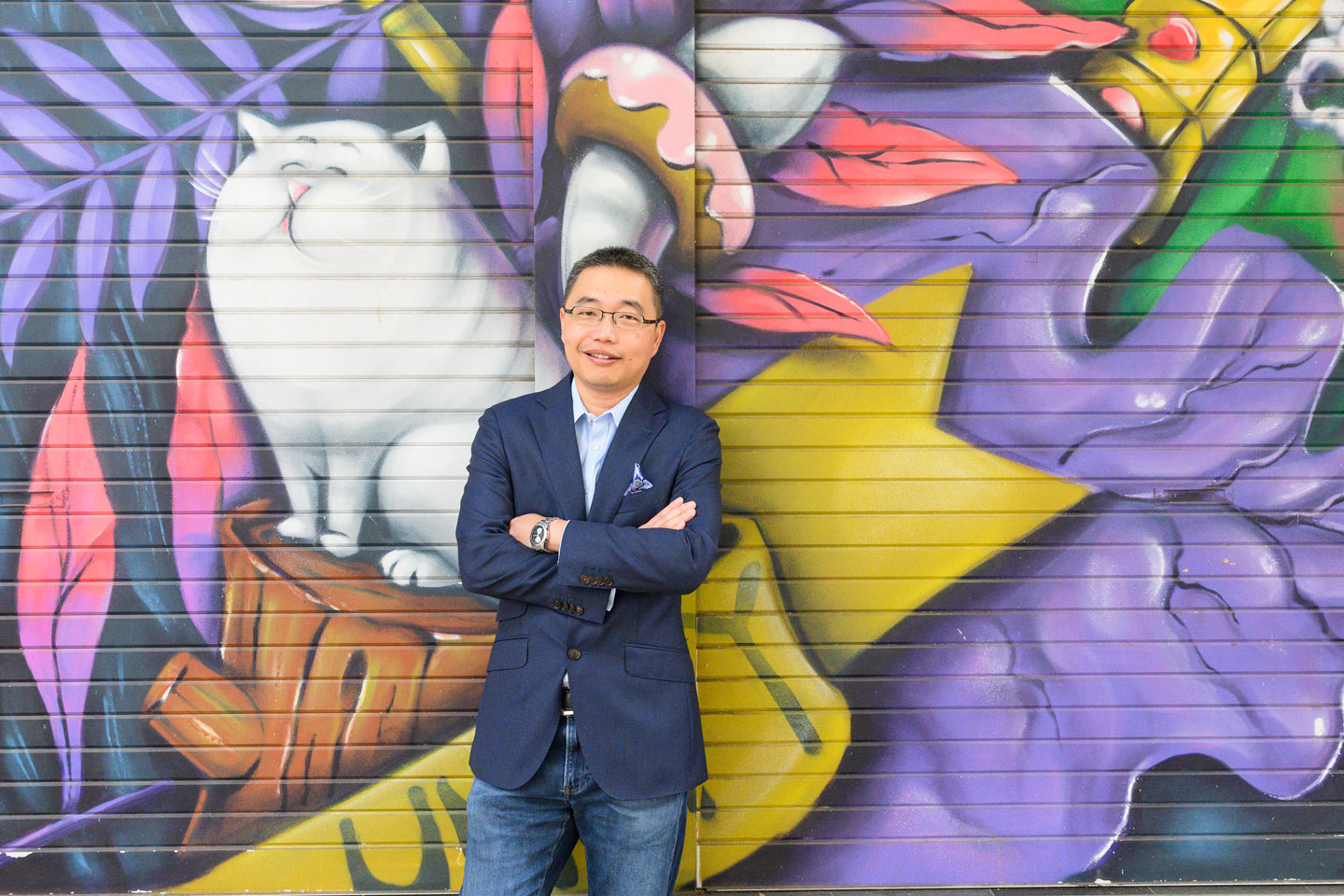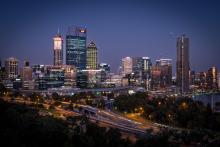Limitless: When HealthEngine co-founder Marcus Tan had a chance encounter with two doctors in 2009, he feared history would repeat.

WHEN HealthEngine co-founder Marcus Tan had a chance encounter with two doctors in 2009, he feared history would repeat.
Only a year earlier, he had been forced to shut down his fledgling online startup, a precursor to HealthEngine, because he couldn’t find the right business model for a digital medical directory.
He had poured 24 months of his life into the idea, sparked while he sat behind the desk at his general practice and rifled through the pages of an outdated medical directory.
Around the time Facebook and Twitter were launched to the world, Dr Tan experienced what he described as a call to arms, fuelled by the frustration that the medical profession still didn’t have timely access to life-saving information.
As is so often the case in the world of tech startups, Dr Tan said being early felt a lot like being wrong.
“We tried to make it work and find a business model and it just never took off; it just didn’t seem to get the interest of the community,” he said.

Unbeknown to Dr Tan, Dr Mike Cadogan and Dr Colin Parker had embarked on the same venture (and were about to meet the same fate because they, too, had struggled to make it profitable).
Dr Tan, however, was convinced he could make it work, buying and rebooting the business with a fresh team and additional capital.
“I told them not to waste those three years, that I believed we could recapitalise and bring a new team to it,” he said.
“I knew it could be an asset.
“I had learned a few things in that period, and I truly believed there was something in this.”
In 2009, Dr Tan and family friend Darius Wey built HealthEngine with the support of investor Adam Yap.
Thirteen years on, the trio still spearhead the company: an online directory valued at more than $120 million last year, which facilitates millions of healthcare bookings each month.

Dr Tan puts much of the business’s initial success down to the goodwill of his friends in the profession and their willingness to give his startup a chance.
However, soon after launch the platform was plagued by the very issue that led to its initial demise: its inability to find a suitable and sustainable business model.
Dr Tan said the business almost failed countless times and is the first to admit that he and his co-founders went to great lengths to keep it afloat.
“At one point, we had a dentist say to us, ‘Look, you know, we’ll use your service, but you need to build a website for my husband’,” he said.
“I thought maybe the husband was a physio or something, but it turned out that he had a driving school and they just needed a website.
“We had hit a real low and we were desperate, but these are the sorts of things you end up doing just to stay afloat, the compromises you make because you need cash flow.
“You know, you sort of feel really dirty at the time, but it’s one of those funny stories that comes out of it.
“Back in the day, we couldn’t get people to pay us $50 a year for a classified listing on our directory.
“How bad was it then? It was pretty bad.But obviously, it turned around.”

Choosing people
Dr Tan was conflicted when it came to the career he wished to pursue.
On the advice of his parents, he considered law and medicine before settling on the latter, swayed by his desire to engage with others.
“I just like people, I’m a people person,” Dr Tan told Business News.
“It sounds cliché to say you just want to help people, but it’s more that you engage with people and hear and interpret their stories.”
Despite leading a team of 100 staff at HealthEngine, Dr Tan still makes time to see his patients on the weekend.
“It’s like catching up with an old friend,”he said.
And he credits that passion for people and the medical profession with underpinning his perseverance during the highs and lows of building a startup.
In the years after its inception, HealthEngine struggled to monetise its product, until the introduction of its online booking system.
The online booking system the company pioneered in general practice was slowly rolled out to dental, allied health, specialist and pharmacy operators.
That helped open opportunities.
“The online booking system meant that it was indisputable that new patients were coming through us and that was one way of unlocking part of the business model that we didn’t have before, which made a huge difference,” Dr Tan said.
Around the same time, HealthEngine secured its first capital injection; $700,000 in seed funding through Larsen Ventures.
But it was launched to new heights in 2013, after it secured a series A deal with Telstra and Kerry Stokes’ Seven West Media worth $10.4 million.
The investment provided a signal to the market and a substantial lift in the capacity of the organisation, allowing HealthEngine to bring in the right talent, develop more products, scale into more markets and build its brand.
In the years since then, HealthEngine has managed to raise more than $62 million.
But the journey has not been without controversy.
In August 2020, the Federal Court ordered HealthEngine to pay $2.9 million in penalties for engaging in misleading conduct, principally by giving non-clinical details of more than 135,000 patients to third parties without adequate disclosure.

Public offering
Before its most recent $30 million private capital injection from Inspire Impact in early 2022, HealthEngine had toyed with the prospect of an IPO and an ASX listing.
Dr Tan said the Telstra-SWM partnership had been pivotal to the company’s growth, but that liquidity was becoming increasingly important to shareholders.
The company spent the better part of 2021 preparing, investigating and sounding out investors.
However, the listing plan was put on ice in the latter half of 2021 after investors began offloading high-growth tech stocks amid skyrocketing inflation and rising interest rates.
“Towards the end of the year, it became very apparent that something wasn’t quite right in the markets, either people were getting tired or there was something in the investor community,” Dr Tan said.
“The whole thing didn’t feel quite right.
“Despite having done all the work, we made a really difficult decision to postpone the listing.”
In the nine weeks between its meeting with social impact fund Liverpool Inspired Impact Fund, and the $30 million landing in the bank, some tech stocks had plummeted by up to 80 per cent.
For Dr Tan, it felt like the company had dodged a bullet.
With the markets expected to remain tough for the next 18 to 24 months, Dr Tan said he intended to instead focus on executing the company’s internal strategy.
It had been a significant year for HealthEngine, which secured the federal government’s $3.8 million contract for the development of a centralised COVID vaccination booking system.
Scoring the contract was a feather in the cap for the Medical Software Industry Association of Australia, which questioned the merit in procuring a custom-built program from a global software giant rather than an experienced local vendor.
But it was a test of the capability and the strength of the team behind it, with HealthEngine given just two business days to pull together a tender submission and a fortnight to roll out the online jab booking system.
Embarking on a project of that magnitude had its fair share of challenges, pressure Dr Tan said was only exacerbated by knowing his work would be sitting with the prime minister.
“Trying to support the millions of patients coming through was tough; and then there were the rule changes and the new vaccines being added,” he said.
“It was bedlam in here for several months.
“It was technically difficult, but we knew it was a really important national initiative.
“So, that’s what we did; and that meant pulling people off other projects and making sure all hands were on deck. We had to hire new people, too.
“I was sitting there thinking ‘Scott Morrison is going to be looking at this’, you know, it needs to be right.”
Strong team
Dr Tan concedes the business’s success and stability would not have been possible without the help of his cofounders, both of whom remain part of the business 13 years on.
“I’ve got a very capable executive team and co-founding team,” he said.
“One of the biggest risks in startups is the co-founders often disagreeing and fighting and then blowing the whole thing up.
“We’ve actually been really super lucky.
“I mean, the fact that we’ve been working together for 13 years and maintaining that level of respect for each other is really valuable.”














